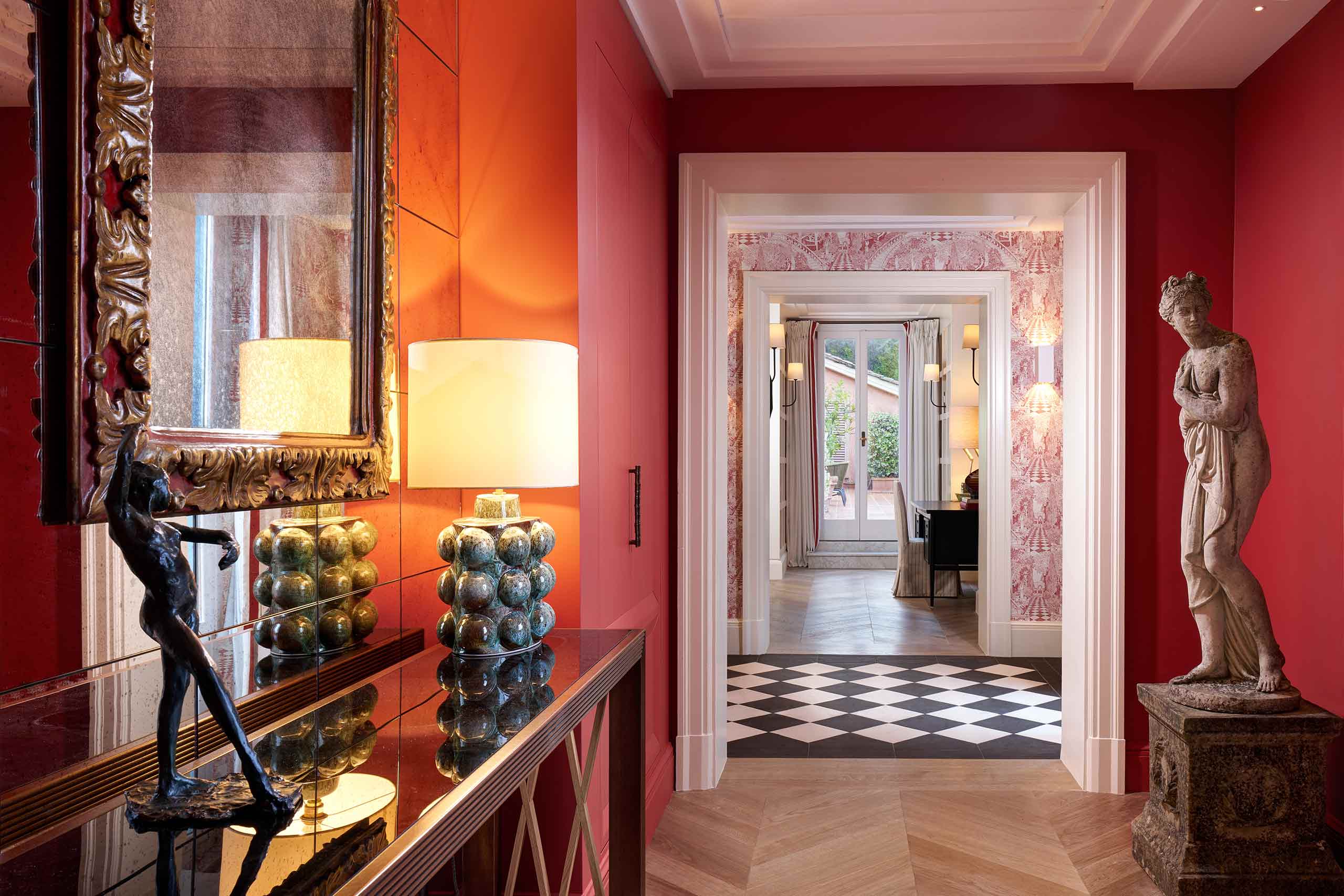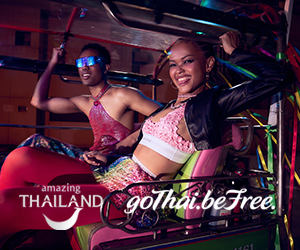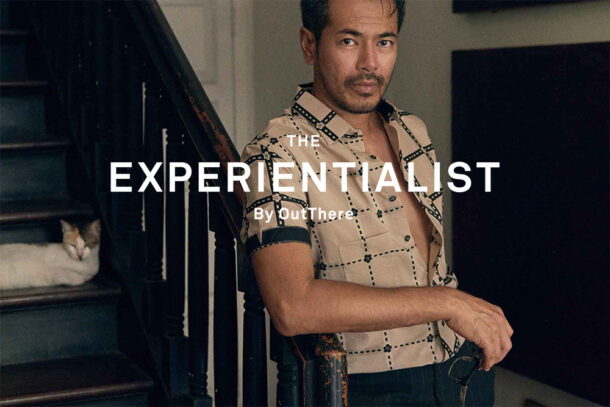A pastel paradise mere steps from Rome’s Piazza del Popolo and the high-fashion mile of Via Condotti, the Hotel de Russie, A Rocco Forte Hotel, has all the makings of an urban oasis. But the dressed-to-the-nines crowd you’ll find sipping Vespers in the property’s famous gardens make the Russie a place where cocktails and culture collide: it’s bustling, it’s fun and, more likely than not, it’s a place you’d want to be seen at.
You could almost walk past the Hotel de Russie without realising it. That’s not because its entrance isn’t imposing: the balconies and pilasters above the front door are grand, and the steel blue shutters against warm terracotta walls are just one example of the masterfully executed interplay of colours we’ve come to expect from hotels part of the Rocco Forte portfolio. And yet, on the narrow Via del Babuino, a mix of taxis and tourists all around isn’t exactly conducive to taking a moment to contemplate the obvious beauty on display. That changes drastically the moment you set foot into the Russie itself. Inside, Pietro Monti’s bas-relief of Archangel Gabriel pairs beautifully with leaf-shaped light fixtures by Bronzetto and bespoke armchairs draped in Milanese fabrics. Copious amounts of flowers, vases, candles, sculptures and artworks adorn vaulted hallways – it’s so chic, if the hotel had a signature sound, it would be stilettos on cobbled pavement.
For the elegant interiors (and perhaps the seriously fashionable crowd, arguably also part of the furnishings), credit is due to brand-wide design director Olga Polizzi, as well as to architect and interior designer Tommaso Ziffer, who was in charge of reviving the property after it joined the Rocco Forte brand in 2000. The site’s history dates back to the 19th century, and it’s long served as a home and hotel for Europe’s nobility and cultural elite. Picasso, having left Avignon, retreated here during WWI, to work alongside French poet Jean Cocteau on the first-ever Cubist ballet (the two had adjoining rooms and are said to have picked oranges from the garden, leaning out of their respective bedroom windows). Perhaps Cocteau was inspired by this when he went on to call the Hotel de Russie ‘paradise on Earth’, and if the biblical idea of paradise as a garden is anything to go by, the playwright wasn’t far off.
A single high wall and a street separate the hotel’s iconic 2,800 sqm/30,140 sqft of terraced gardens at the foot of the Pincian Hill with Rome’s premier park, Villa Borghese. Its near-extension-like status is one thing, but the giardino would be a standout feature of the hotel on grounds of its beauty alone: having been returned to its original, Giuseppe Valadier-designed layout in 2020, it’s a showcase of Neoclassical sentiment, where stairs with platforms (perfect for making an entrance) meet balustraded terraces and a sea of powder-white parasols. The fragrant scents of rose bushes, citrus trees and towering pines beckon guests to explore the gardens’ pretty pathways, where statues, grottos and water features paint a truly paradisiacal picture – so much so, in fact, that when Lady Gaga (“very nice to the staff”) spent a birthday here while filming House of Gucci in 2021, she’s said to have celebrated in the gardens until 3am, despite not staying at the Russie.
Speaking of staying here, the hotel features 120 rooms including 34 suites, with a quartet of special ‘Forte Suites’ that are its most luxurious and include private shopping tours with a personal shopper or ‘art running’ with a dedicated, personal trainer. Our 55 sqm/592 sqft Deluxe Room with an Italian marble bathroom, a very decent-sized workstation, a Kingsize bed and a small reclining area was humble in comparison, though we loved its pear-coloured accents and Zimmer + Rohde cushions. From Fornasetti and Porta Romana to Lewis & Wood and San Patrignano Casa d’Arte, many accommodations boast best-in-class furnishings. Still, there’s a surprisingly subtle approach to intricate detail, presumably to retain an airiness to the spaces that’s often overlooked in the city’s opulent hospitality scene. This felt very modern to us, and we found that our room was both calm enough to write the occasional work email or two, as well as beautiful enough for us to want to spend some time reclining on a chaise lounge by the floor-to-ceiling windows that offered views of the hotel’s courtyard and splendid gardens below.
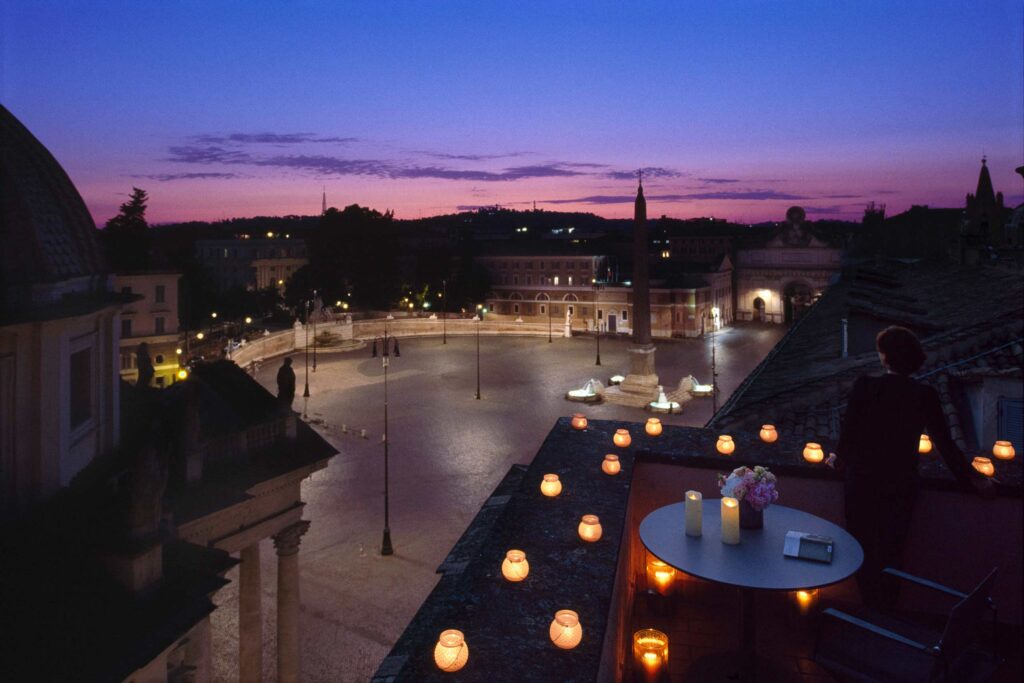

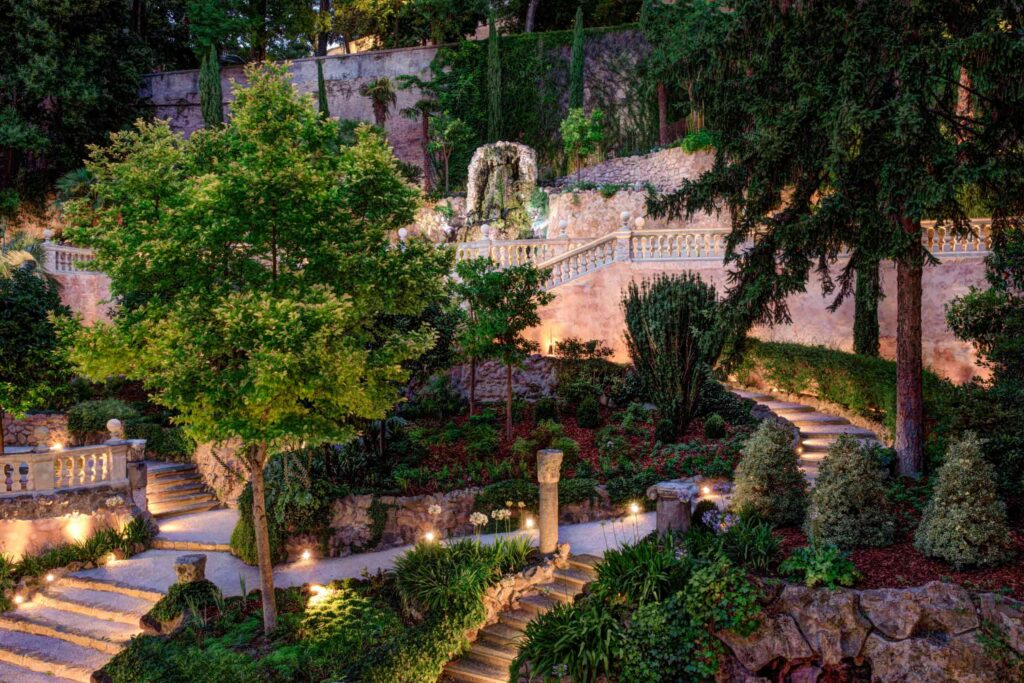
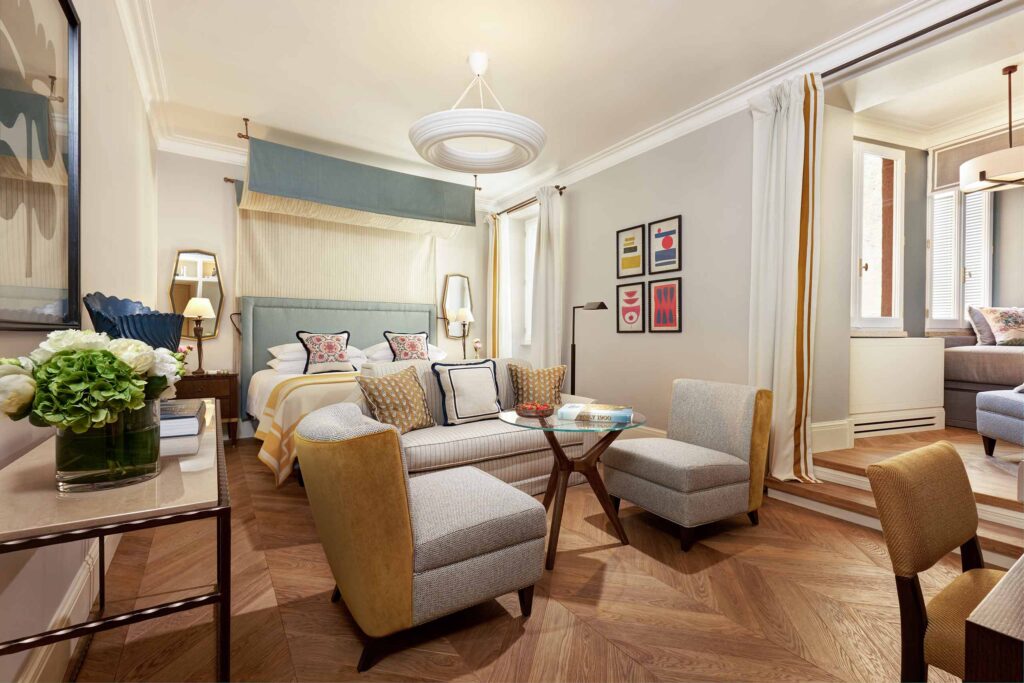
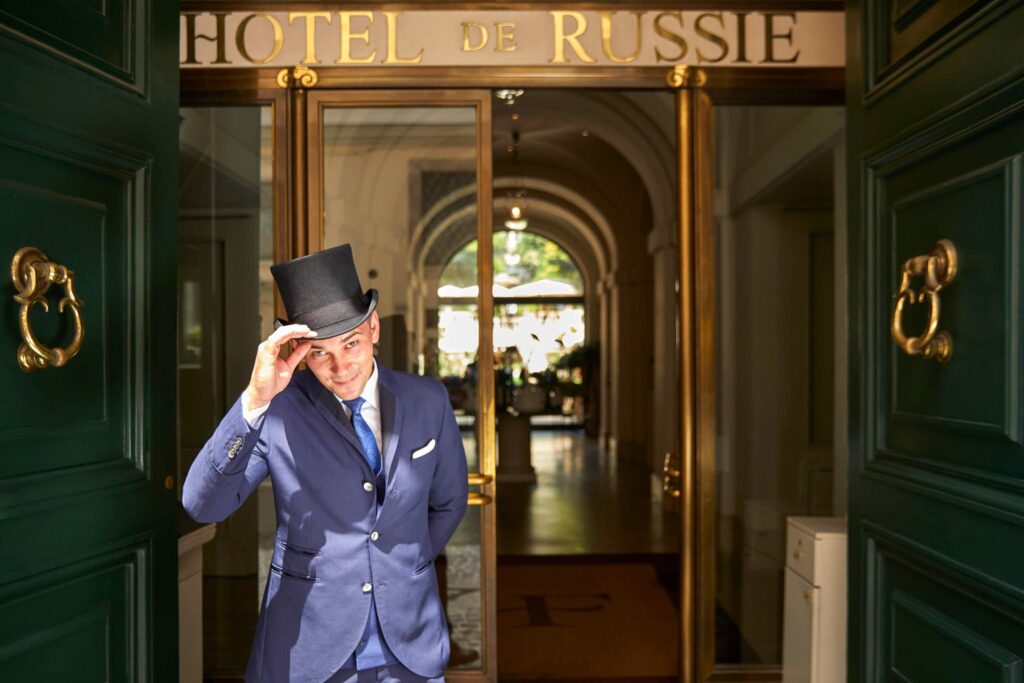
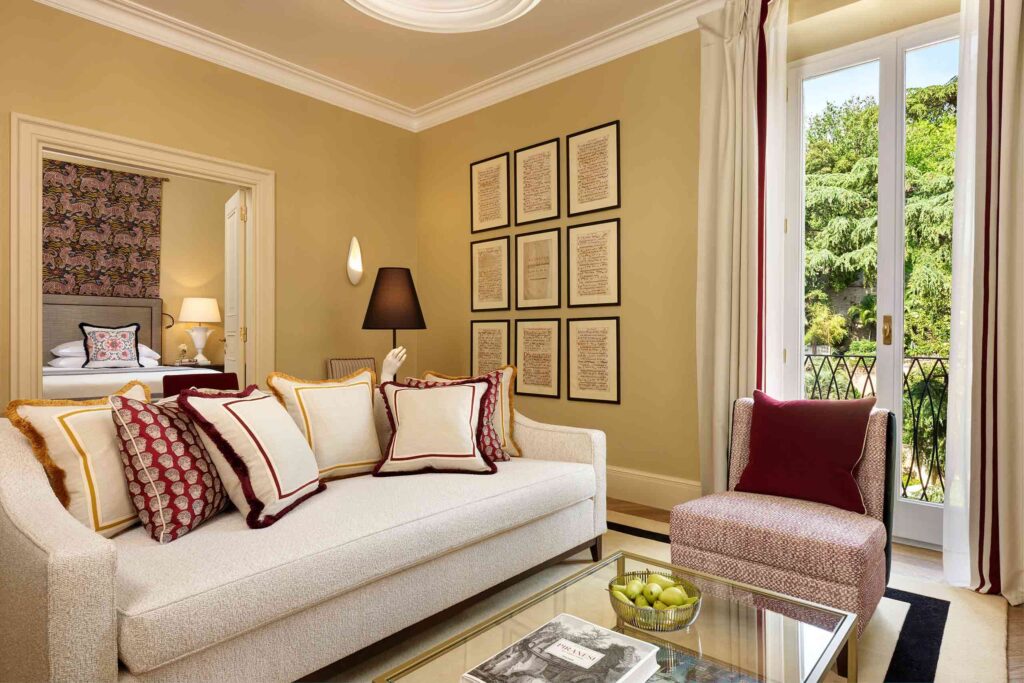
| Perfect for | Fly into | Right on time |
| The Sophisticate | FCO | GMT +2 |
| While you’re Out There |
| A stay at the Russie means the Piazza del Popolo and the twin basilicas of Santa Maria dei Miracoli and Santa Maria in Montesanto are around the corner. Meanwhile, Italy’s National Museum of 21st-Century Art, MAXXI, is just a ten-minute taxi ride away. Its building alone, designed by Zaha Hadid Architects, is worth a visit, and the modern Flaminio neighbourhood offers an alternative view of this ancient city. |
That said, there’s room for improvement. We enjoyed the Irene Forte amenities, from night creme left on our bedside at turndown to toiletries in the bathroom, though, with sustainability in mind, we were less impressed to find the latter came in travel-size plastic containers. Light sleepers would also be well advised to ensure they book a room further along the hotel’s southern wing, which overlooks the garden. Our room, in contrast, looked out over the narrower courtyard, where chit-chat echoed in the evenings (windows aren’t soundproof), which can make it difficult for guests to unwind in their rooms – something that would be particularly true for those living with autism, who process sounds differently. Bustle eventually always dies down, of course, and beds at the Hotel de Russie are certainly very comfortable, but if you’re looking for a perfectly serene space and an early night, make sure to let the hotel know at the time of booking.
One of the most enjoyable experiences of any stay here would be a deep dive into the Russie’s stunning breakfast setup. Arranged across round, flower-bearing tables inside its Le Jardin restaurant, just about every type of juice, fruit or pastry under the Roman sun adds to a staggering display of culinary wealth in a space adorned with floral murals by artist Gio Bressana. The very floor you stand on is eye-catching, thanks to its star-shaped tiles, and a Murano chandelier fills the room with a golden glow that bounces off its dusty green colours and coral contrasts. At night, the space and adjoining gardens practically gleam with warmth, making them even more magical, while a blend of high-flying visitors and locals make for rather fabulous socialising (or people-watching, depending on your personal preference).
The one thing we didn’t so much enjoy at Le Jardin was the food itself. It’s not that our meals weren’t tasty – we dined on heart of lettuce salad with peaches and almond-based dressing, spaghetti al pomodoro, a main that was quite literally just pan-fried porcini, and peach sorbet for dessert – but eating a plant-based diet, we found that any dishes suggested to us were an afterthought, and there wasn’t a single dedicated, interesting vegan meal option on offer. Neither was there any labelling on the restaurant’s menus that would’ve made ordering more straightforward, and though our kind waiter tried his very hardest to salvage the situation, we ultimately felt so underwhelmed (and tipsy, having filled up on Chablis, instead), that we walked away disappointed, even skipping a nightcap at the pretty Stravinskij Bar.
We felt decidedly more spoiled at the hotel’s 600 sqm/6,458 sqft spa, where a hydrotherapy saltwater pool, a Finnish sauna and a steam room make a strong case for relaxation, and a fully-equipped gym offers anything the heart could desire when looking to get the pulse up. While the facilities were perfectly suited for an hour or two of recharging the batteries, don’t expect them to be at the vanguard of what’s holistically or medically possible in a modern-day spa: when we visited, the Russie wasn’t the type of hotel where you’d stumble upon compression boots or infrared beds, and we certainly didn’t see any cryo-chambers or the like – not that anyone staying here would likely be looking for them. That said, the wellness areas are undergoing extensive renovations at the time of writing, and we’d argue that if the new facilities will be anywhere near as original as the ones we experienced during our stay (picture a slightly nostalgic and playful ocean theme with wave-like mosaic floors and deep loungers that resembled boats on the Tyrrhenian Sea), we’re sure they’ll be very special, indeed.
There’s a philosophy among many iconic hotels to stay true to what they’ve always done and some fall behind on things like interiors and elements of storytelling woven into each guest stay, as a result. Refreshingly, this isn’t the case at the Hotel de Russie. Despite its historical makeup, it’s a property that feels more modern than you might expect, in many regards: service isn’t stuffy and the atmosphere, particularly in the gardens, is exceedingly social and fun. If its gastronomic offering were to embrace more diverse dietary requirements in the future, the hotel might just manage to pull off that rare feat of offering hospitality inclusive of all-around modern sensibilities in a structure dating back to a time that was arguably very different from our own. As it is, the Russie is already a classic… and no doubt one of the most fabulous places to stay in town.
Photography courtesy of Rocco Forte Hotels


